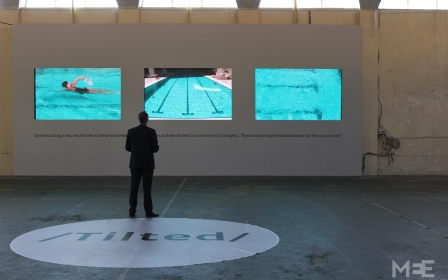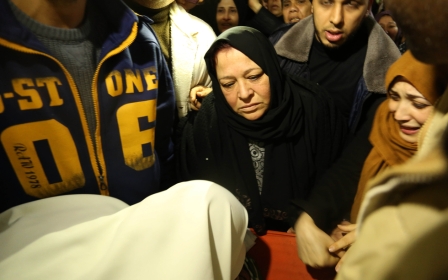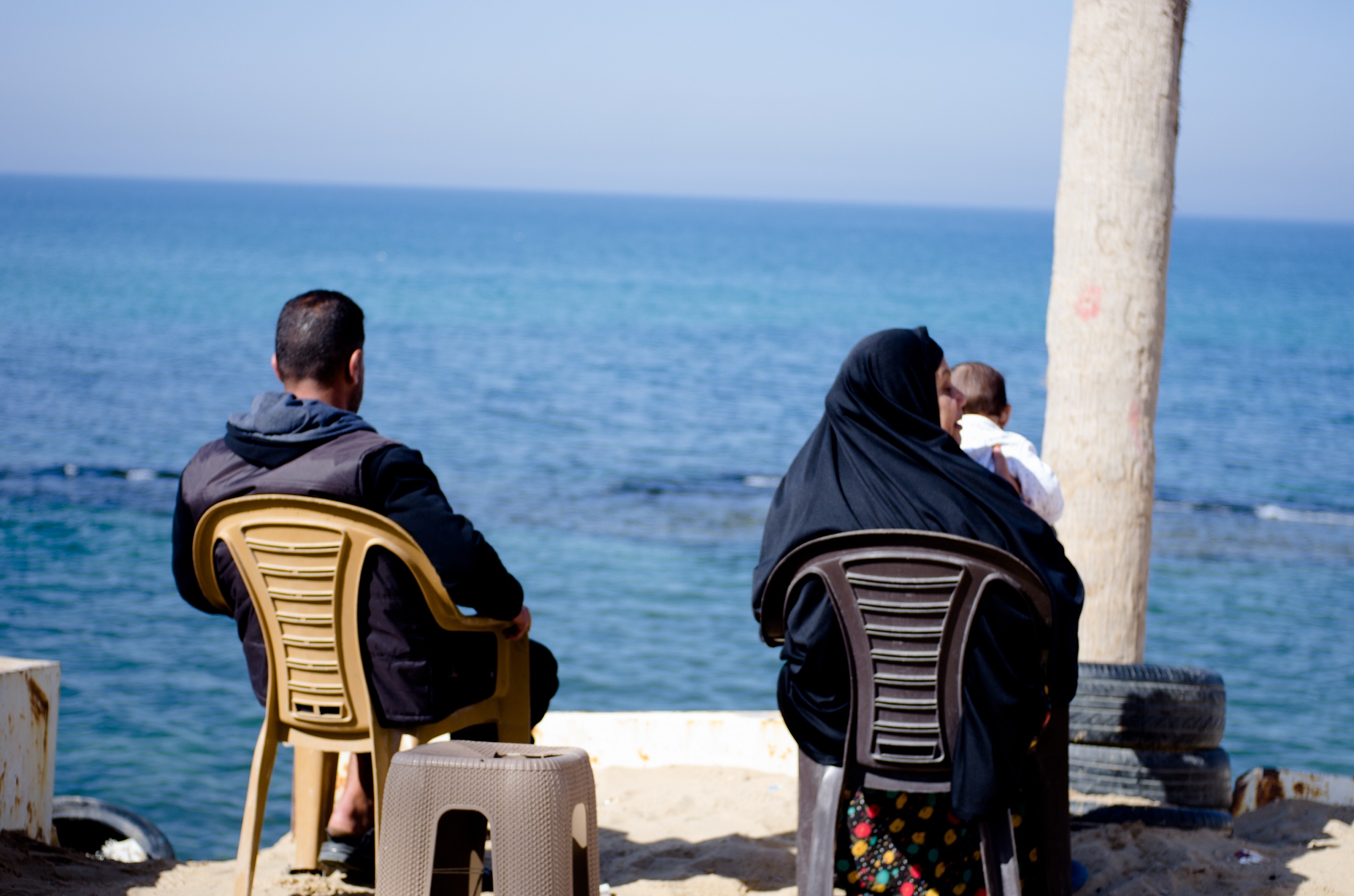
In pictures: How Gaza seeks work and rest from the sea

In the morning, when the air is still heavy with moisture, fishermen board small trawlers and set out from Gaza City's port to search for a catch within the six nautical miles that Israel allows them to fish (Kaamil Ahmed/MEE)
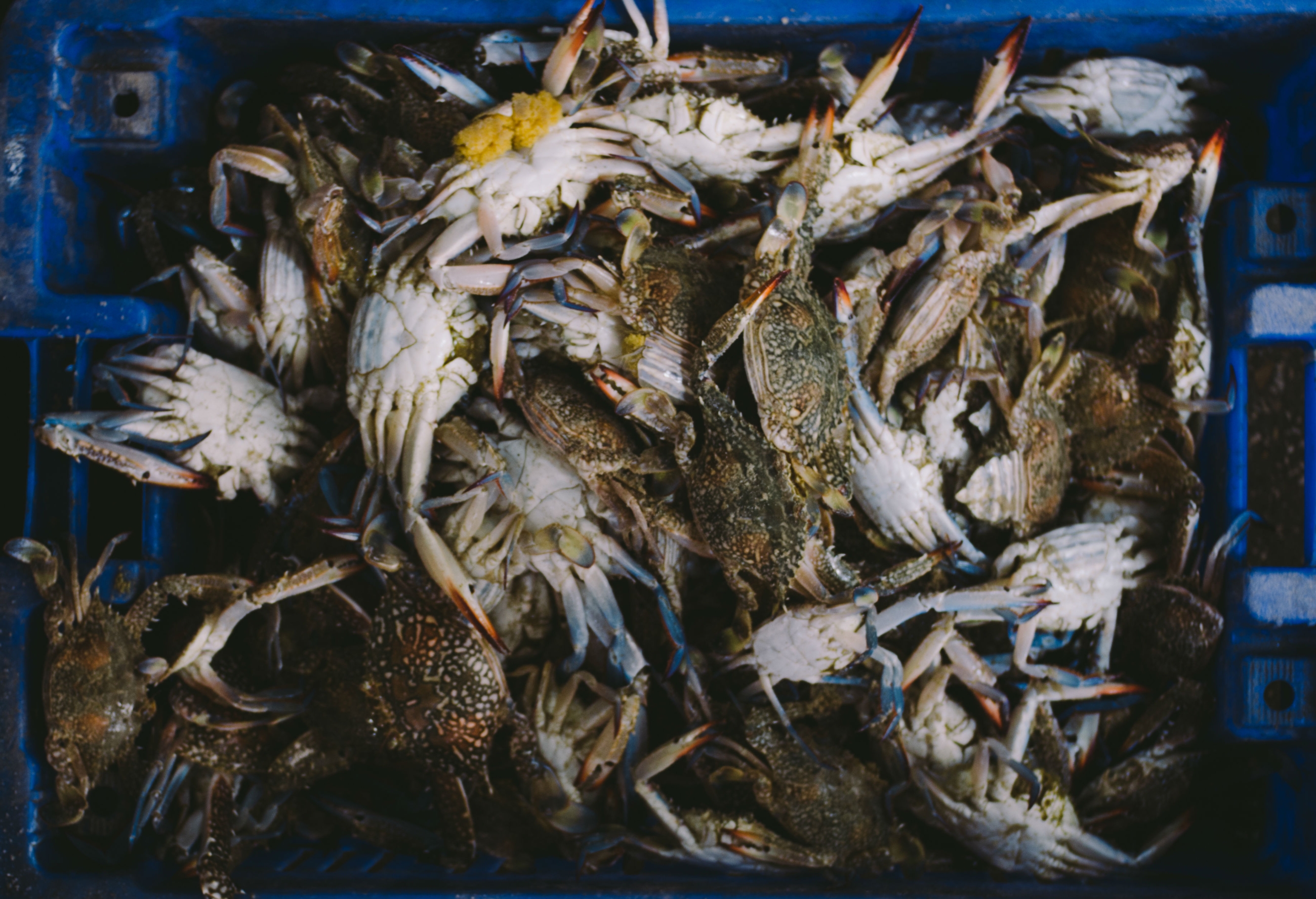
Gaza's fish market lies empty, too big for the downsized hauls with which fishermen now return. But among the jumble of fish and the odd baby shark there is always a crate of prized blue crab (Kaamil Ahmed/MEE).
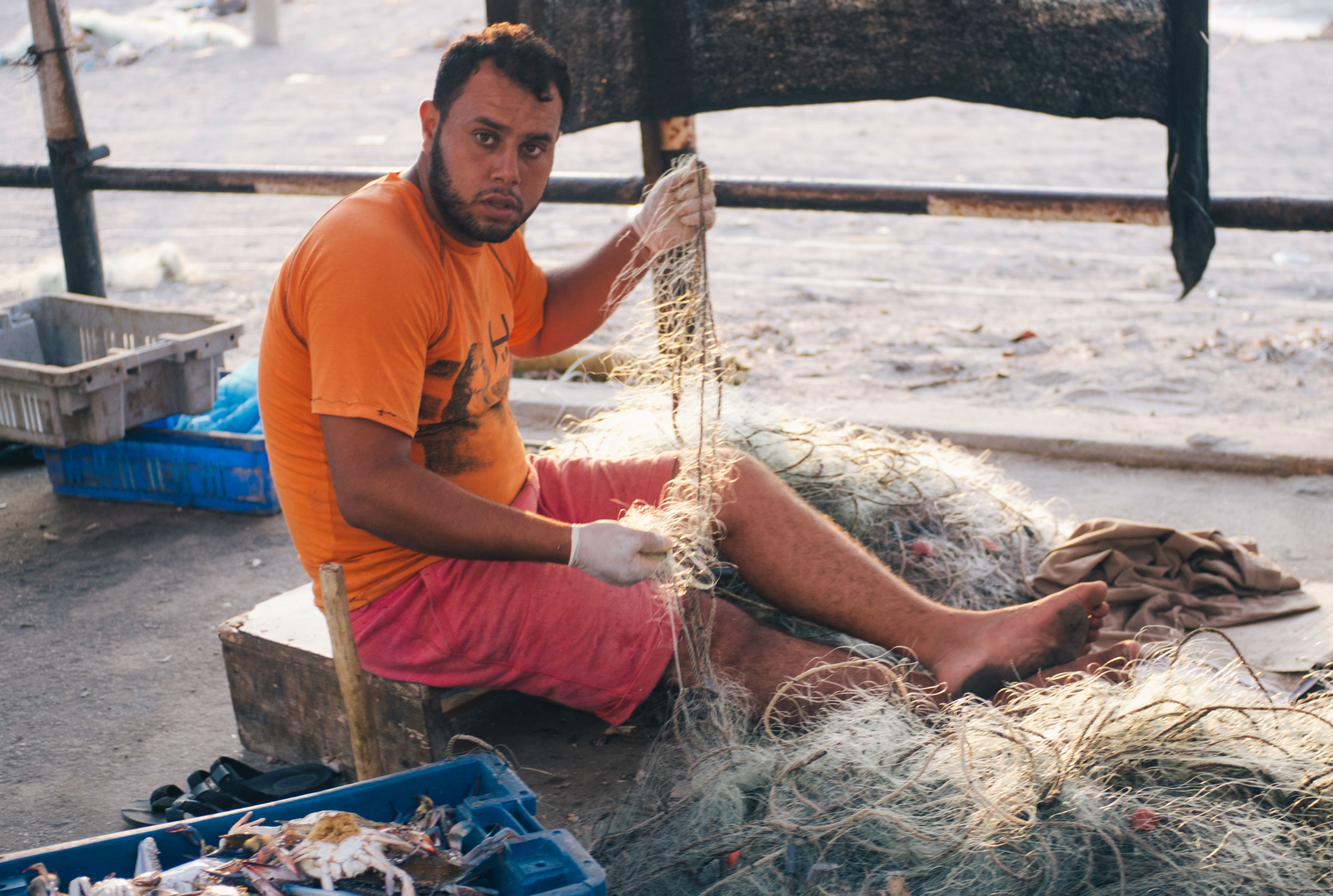
Gaza's connection to the sea may be the strongest in the Shati refugee camp, named after the coastline on which it sits. Everywhere there are fishermen, either preparing to go out to sea or else returning with hauls that they sell on the roadside while they fix their nets (Kaamil Ahmed/MEE)
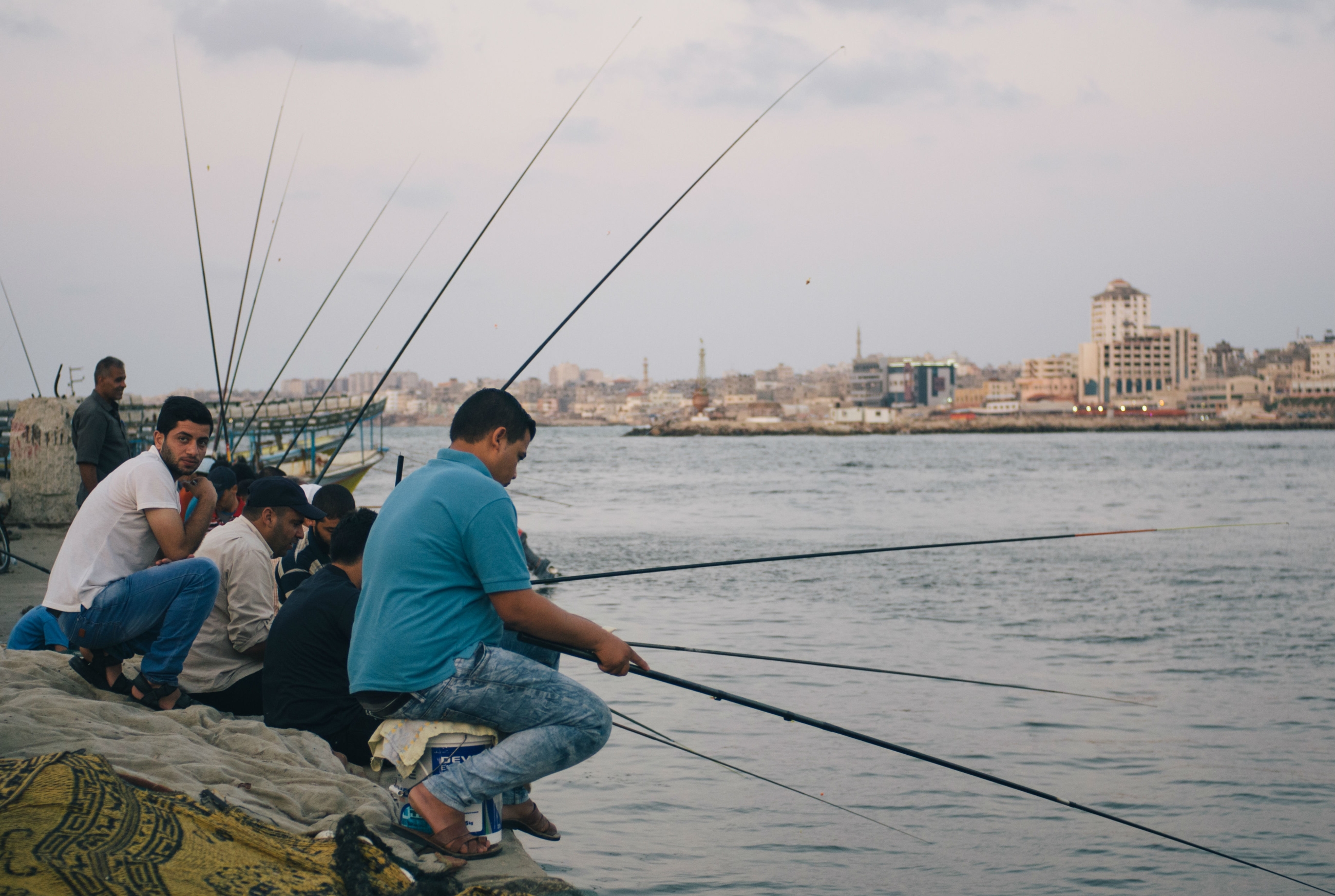
Palestinian men sit together at Gaza's port when they don't have work, which is often for the enclave's many unemployed, drinking coffee as they watch their rods (Kaamil Ahmed/MEE)
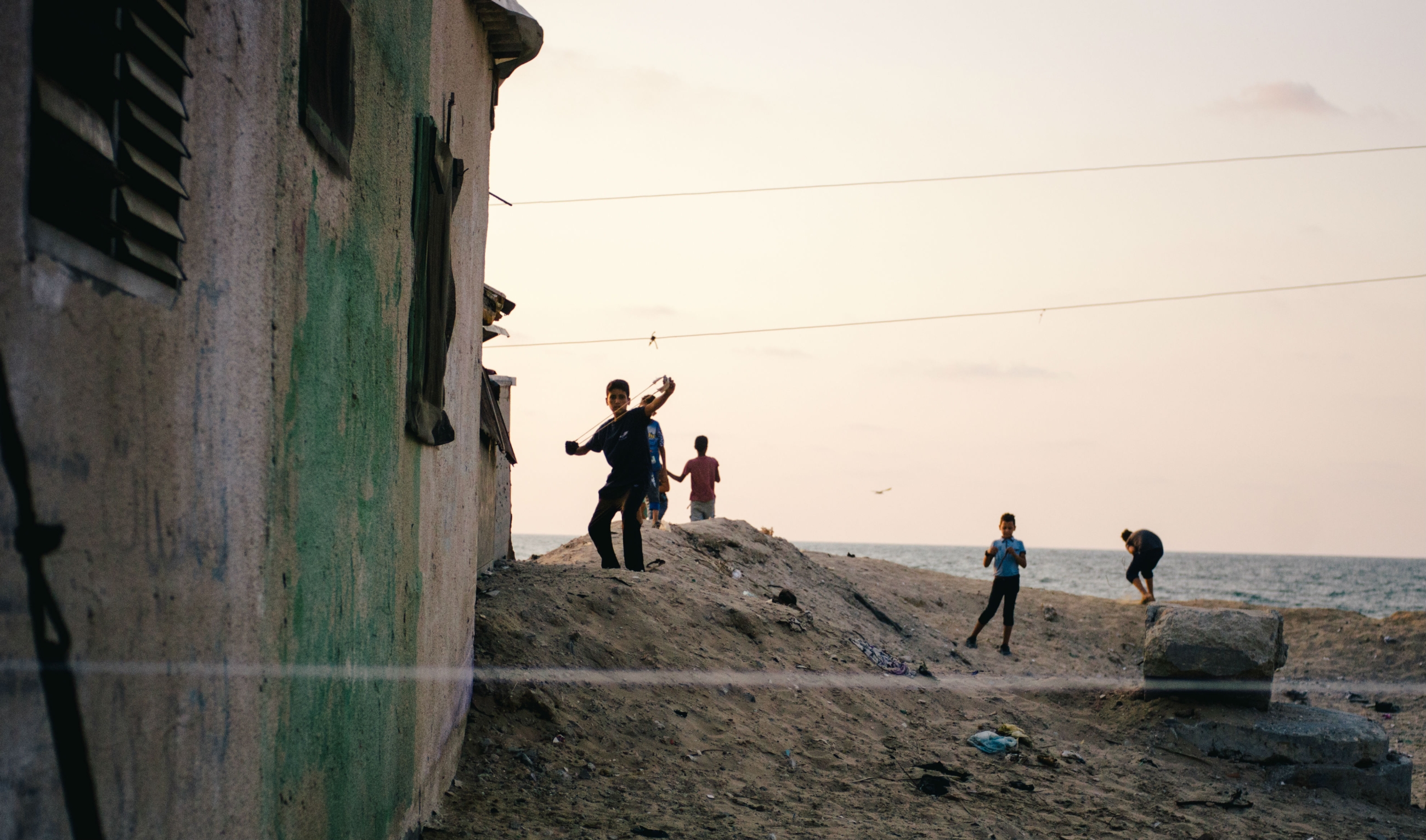
As the men and older teens weave the ropes for fishing nets, Shati camp's kids play on the shore, flinging stones into the Mediterranean with their sling shots. Only metres away a wastewater pipe pumps sewage into the sea (Kaamil Ahmed/MEE)
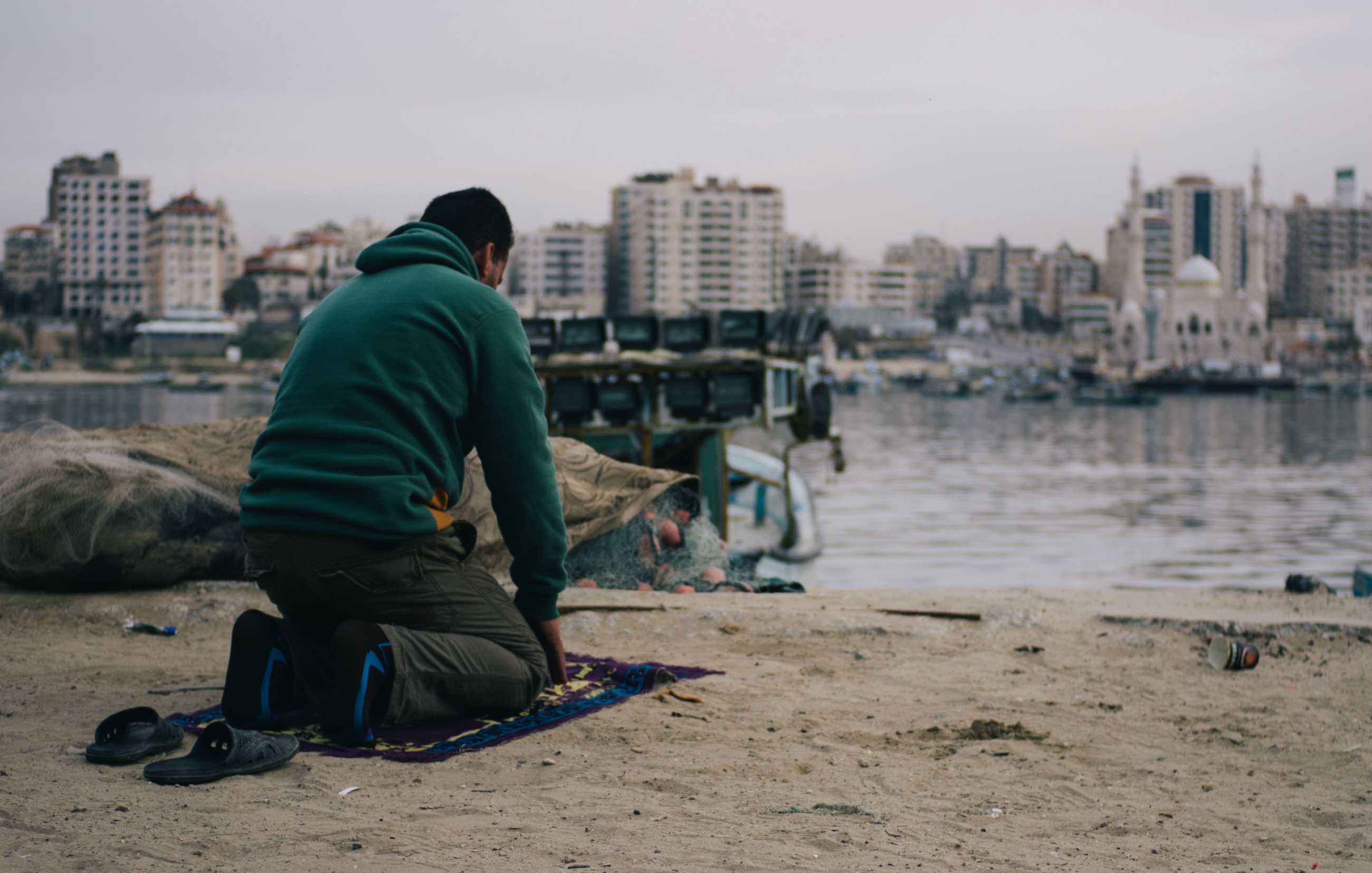
A resident at prayer. As Gaza increasingly struggles with power shortages and political stagnation in recent years, so the sea has become an emotional, physical and mental crutch. (Kaamil Ahmed/MEE)

A vendor sets up his coffee stall decorated with the Algerian flag, catering for the families who whittle away the evening hours in the port. Palestinian youths climb up the breeze blocks behind him, posing for selfies against the sunset (Kaamil Ahmed/MEE)

As the sun sets on Gaza, little pinpricks of light begin dotting the darkened coastline. Battery-powered LEDs fastened to coffee stalls cut against the night in the power-starved enclave, the only source of illumination for teen vendors preparing for nightly gatherings by the sea (Kaamil Ahmed/MEE)
This article is available in French on Middle East Eye French edition.
Middle East Eye propose une couverture et une analyse indépendantes et incomparables du Moyen-Orient, de l’Afrique du Nord et d’autres régions du monde. Pour en savoir plus sur la reprise de ce contenu et les frais qui s’appliquent, veuillez remplir ce formulaire [en anglais]. Pour en savoir plus sur MEE, cliquez ici [en anglais].


